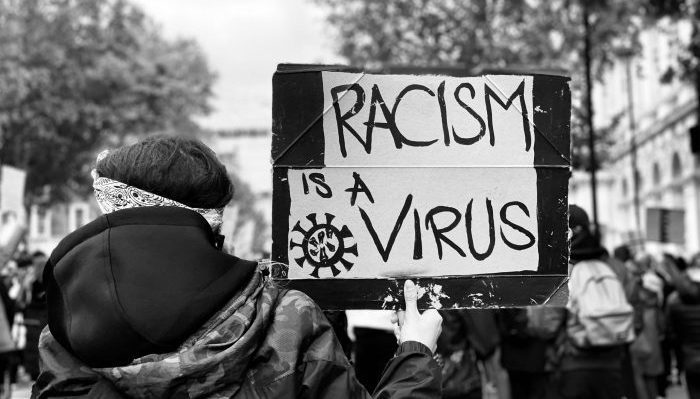Last year, Silicon Prairie News took a look at racism in tech education and the tech hiring process in a two-part series, “It’s Time.” We’re taking another look at this important issue with a three-part series inspired by the summerlong national reckoning with racism in the U.S.
Before landing the role of Happiness Engineer at the company he loves, Flywheel’s Eric Swanson had trouble securing a tech job.
He didn’t fit the stereotype of a computer programmer. The gregarious, laid back California native went to West Point Military Academy, owned his own medical staffing business, and has long DJ-ed under the nom de spin Deejay Sweetlife. At ease with all kinds of people, Swanson worked as a sonographer for years until his intellectual curiosity enticed him to switch from medtech to programming.
He plays guitar in his church choir. He’s a father to twins.
He’s Black.
Swanson believes this last attribute made it difficult for him to gain a foothold in tech. He said prospective employers have looked at him quizzically while he sat in lobbies waiting to interview for entry-level jobs. Despite a top-notch portfolio, stellar references and multiple semesters’ experience teaching programming, he couldn’t even score an internship.
Then he got introduced to Dusty Davidson at Flywheel, who was willing to give him a chance. Within days, he was offered a job.
According to the U.S. Bureau of Labor Statistics, in 2019, Black people made up only 7 percent of the total workforce of computer programmers, software developers and web developers in the U.S., compared to white people at 66 percent. Moreover, there are three times as many men as women with jobs in these positions, with women comprising only 20 percent of this workforce. The disparity between these numbers cannot be entirely attributed to unconscious bias—differences in access to technology plays a role in the “digital divide” between white people and people of color, for instance—but the multitude of peer-reviewed studies that suggest the prevalence of unconscious bias likely doesn’t help.
While Swanson’s story had a positive outcome, it highlights the bias rooted in the hiring process despite calls by experts for employers to reduce their susceptibility to bias-driven behavior. His experience also points to a wider societal issue that can haunt people of color throughout their lives: how the perceived proximity to, or distance from, whiteness unduly shapes the opportunities people of color receive, tilting some potential employers toward or against them, consciously or not.
In Swanson’s case, he said he believed his white-sounding name opened the door wide enough for him to make it past the first round with interviewers.
“This is how the system is part of me as well,” he said. “Every time I had to fill something out, I’m like, ‘I’m glad my name is Eric Swanson. Not Devarious Taylor.’”
“And that’s messed up!” he continued. “It spills over into how we see things, you and I.”
Research affirms Swanson’s belief that his white-passing name may have made him more likely to get called back by employers. A National Bureau of Economic Research study found that the resumes of fictitious people with white-sounding names received 50 percent more callbacks than the exact same resumes featuring Black-sounding names.
And a two-year study by researchers from Stanford and the University of Toronto revealed that African-American and Asian candidates who “whitened” their resumes were up to two-and-a-half times more likely to receive job interviews than when their resumes implied or stated their race, even though their qualifications remained identical. Companies that professed diversity as a core value were still more likely to offer an interview to a white-passing candidate than companies that did not consider diversity a core value.
Women also face bias on the job hunt. A study conducted by researchers at the University of Colorado Leeds Business School delivered grim results: They found when women were the only female in the finalist pool for academic positions, they had a zero percent chance of being hired.
In some instances, people of color and women might actually be more likely to get hired—but only if the majority of finalists are also people of color or women, according to another study by University of Colorado researchers. (Researchers attributed this shift to people’s tendency to uphold the status quo.) This could be an unexpectedly good thing if it increases diversity in the workplace, which has been shown to increase company performance and improve the bottom line.
But how often do women or people of color outnumber white men in the finalist pool—particularly for tech jobs?
Despite the documented structural racism in tech education and the tech hiring process, can technology actually be used to overcome systematic oppression?
Come back tomorrow for part two and see how a Brazilian startup builds software to reduce unconscious bias in the hiring process.
And don’t miss part three on Friday, written by Omaha data scientist Noni Williams as she lends her expert perspective as both a Black woman and a technologist to the possible benefits (and potential drawbacks) of enlisting software in the fight against unconscious bias.




